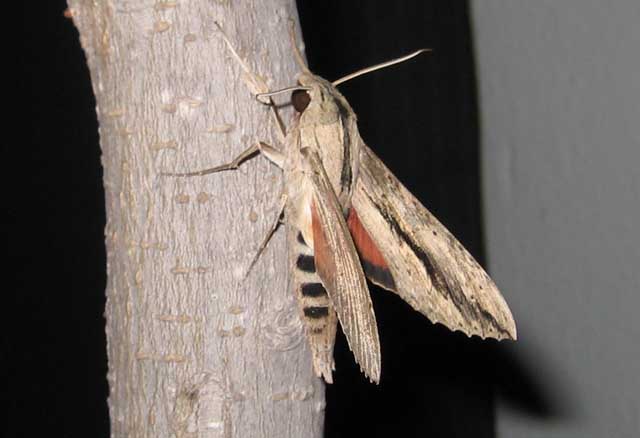Poinsettias, Euphorbia pulcherrima, are beautiful, potted plants grown in large numbers during the holiday season. They generally begin blooming in late November, continuing to bloom throughout the month of December.
The conspicuously colorful parts (known as bracts) are modified leaves and come in a variety of different colors, shapes, and sizes. Many modern varieties of Poinsettias may even retain their colorful bracts far beyond the holiday season, and with optimal outdoor conditions, can additionally be transplanted for landscape use.
Unfortunately, the poinsettia hornworm can be devastating to these plants. The name ‘hornworm’ comes from the horn-like projection at the end of their abdomen.
Hornworms are among some of the largest caterpillars known and can reach the size of a human thumb. They can be somewhat challenging to spot because they easily blend in with stems and green foliage, remaining stationary for some time, when they are disturbed.

If your Poinsettias appear to be missing leaf sections or showing signs of defoliation, carefully observe your plants for the hornworm caterpillar, as a single hornworm can quickly defoliate a whole plant. Luckily, these caterpillars are harmless to humans and their large size makes them easy to handpick from plants once spotted.
For more information, check out the following resources: I & II.
The Featured Image depicts of the hornworm (Ello Sphinx caterpillar) showing its characteristic ‘horn’ at the end of its abdomen. Photo by Wayne Fidler, iNaturalist.
 1
1
